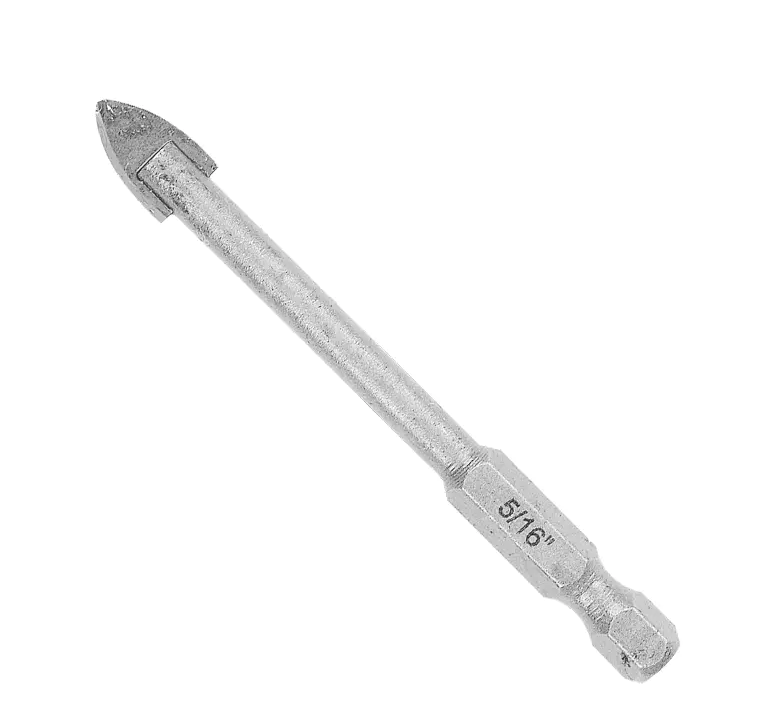The Glass Drill Bit is a specialized tool designed specifically for drilling into glass and other fragile materials, which sets it apart significantly from ordinary drill bits that are typically used for wood, metal, or plastic. The fundamental differences between a Glass Drill Bit and regular drill bits lie in their design, materials, tip structure, and the way they handle the delicate task of penetrating brittle surfaces without causing cracks or breakage.
One of the most noticeable distinctions is the tip design. A Glass Drill Bit usually features a spear-shaped or pointed tip with a very sharp cutting edge, often coated with industrial-grade diamond or tungsten carbide to enhance cutting ability and durability. This tip shape allows the bit to carefully score the glass surface before gradually drilling deeper, minimizing stress concentration and preventing the glass from shattering. In contrast, regular drill bits generally have a conical or twist design with sharper cutting edges intended to remove material quickly from tougher and more resilient surfaces such as wood or metal. These standard tips lack the delicate approach necessary for brittle materials and would likely cause cracking if used on glass.
The material composition of Glass Drill Bits also differs from that of ordinary drill bits. Glass bits are usually made from hardened steel with an additional layer of diamond or carbide grit, which increases abrasion resistance and maintains sharpness even after repeated use on hard, smooth surfaces like glass. Regular drill bits, depending on their intended use, might be made from high-speed steel, cobalt steel, or titanium-coated materials, optimized for durability against softer and more malleable substances but not suitable for the smooth, fragile nature of glass.
Furthermore, the drilling technique recommended for Glass Drill Bits varies substantially from that of regular bits. Glass drilling requires slow speeds, steady pressure, and often continuous cooling with water or lubricant to dissipate heat and avoid thermal stress that can crack the glass. Standard drill bits operate at higher speeds and with more aggressive pressure because the materials they work on can handle such forces. Using a regular bit on glass can quickly generate heat and uneven pressure, which is detrimental to the integrity of the glass.
The overall precision and finish provided by Glass Drill Bits are superior for glass applications. These bits allow for clean, smooth holes with minimal chipping around the edges, a quality essential for maintaining the aesthetic and structural integrity of glass panels or products. Ordinary drill bits, lacking the specialized tip and materials, tend to produce rough, uneven holes that compromise the glass and may lead to failure.
In summary, a Glass Drill Bit is distinctly engineered to handle the delicate, brittle nature of glass through specialized tip shapes, tougher materials, and careful drilling techniques. Regular drill bits are designed for more robust, forgiving materials and lack the features needed to protect fragile glass surfaces. Understanding these differences ensures the correct choice of tools, leading to safer, cleaner, and more efficient drilling in glass applications.
Glass Drill Bit Product Advantages
1. Anti-Slip Design
Enhanced Grip: This design helps to prevent slipping during use, which is crucial for maintaining accuracy and safety when working with fragile materials.
Increased Safety: By reducing the chances of the drill bit slipping, the hex shank enhances overall safety during operation, ensuring that the user can work with confidence.
2. High Compatibility
Universal Fit: This broad compatibility eliminates the need for additional adapters, making it a convenient tool for various applications.
3. Efficient Heat Dissipation
Quality Materials: This feature helps to prevent overheating, which can prolong the life of the drill bit.
Durability: Effective heat management ensures that the drill bit remains functional under high-intensity use, reducing wear and tear and maintaining performance over time.
